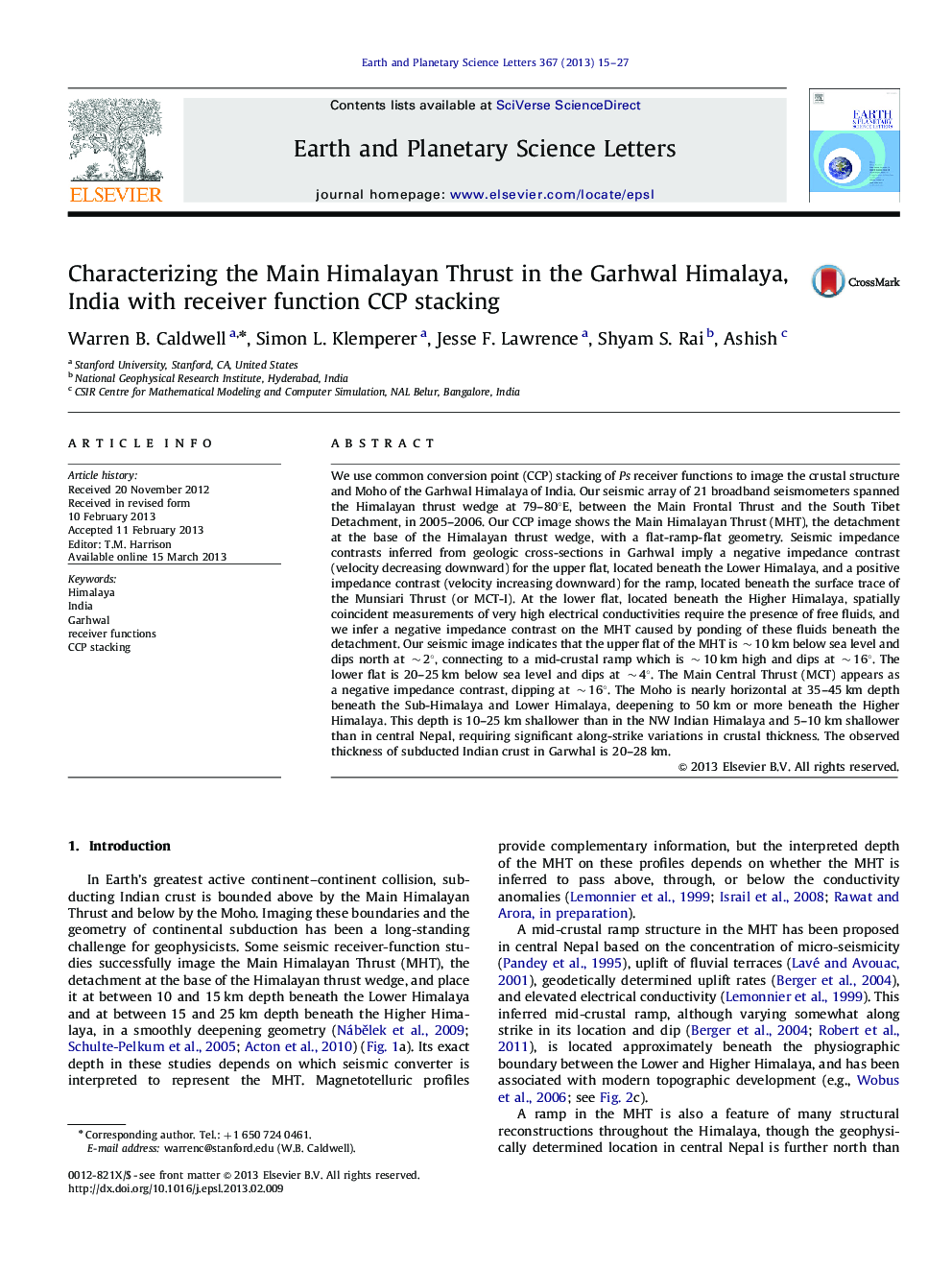| کد مقاله | کد نشریه | سال انتشار | مقاله انگلیسی | نسخه تمام متن |
|---|---|---|---|---|
| 6430263 | 1634786 | 2013 | 13 صفحه PDF | دانلود رایگان |

We use common conversion point (CCP) stacking of Ps receiver functions to image the crustal structure and Moho of the Garhwal Himalaya of India. Our seismic array of 21 broadband seismometers spanned the Himalayan thrust wedge at 79-80°E, between the Main Frontal Thrust and the South Tibet Detachment, in 2005-2006. Our CCP image shows the Main Himalayan Thrust (MHT), the detachment at the base of the Himalayan thrust wedge, with a flat-ramp-flat geometry. Seismic impedance contrasts inferred from geologic cross-sections in Garhwal imply a negative impedance contrast (velocity decreasing downward) for the upper flat, located beneath the Lower Himalaya, and a positive impedance contrast (velocity increasing downward) for the ramp, located beneath the surface trace of the Munsiari Thrust (or MCT-I). At the lower flat, located beneath the Higher Himalaya, spatially coincident measurements of very high electrical conductivities require the presence of free fluids, and we infer a negative impedance contrast on the MHT caused by ponding of these fluids beneath the detachment. Our seismic image indicates that the upper flat of the MHT is â¼10km below sea level and dips north at â¼2°, connecting to a mid-crustal ramp which is â¼10km high and dips at â¼16°. The lower flat is 20-25 km below sea level and dips at â¼4°. The Main Central Thrust (MCT) appears as a negative impedance contrast, dipping at â¼16°. The Moho is nearly horizontal at 35-45 km depth beneath the Sub-Himalaya and Lower Himalaya, deepening to 50 km or more beneath the Higher Himalaya. This depth is 10-25 km shallower than in the NW Indian Himalaya and 5-10 km shallower than in central Nepal, requiring significant along-strike variations in crustal thickness. The observed thickness of subducted Indian crust in Garwhal is 20-28 km.
260Highlights⺠We present the first receiver function CCP image of the Garwhal Himalaya, at 79-80°E. ⺠The Main Himalayan Thrust (MHT) exhibits a complex seismic impedance signature. ⺠Negative impedances and coincident low resistivities on the MHT imply ponded fluids. ⺠A â¼16°, NE-dipping ramp in the MHT is present beneath the transition from Lower to Higher Himalaya. ⺠The thickness of subducted Indian crust in Garwhal varies down-dip between 20 and 28 km.
Journal: Earth and Planetary Science Letters - Volume 367, 1 April 2013, Pages 15-27